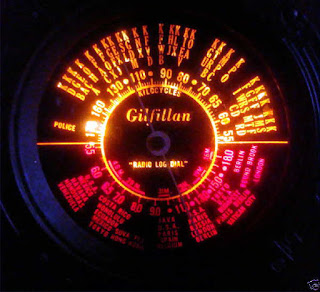 At The Dials
At The Dials
 |
| Courtesy |
A recent never-ending series of equipment breakdowns, repairs, computer software problems, along with everyday household duties, has kept me away from blogging longer than usual.
However, the recent arrival of a fresh 'off the press' 2018 World Radio Television Handbook (WRTH) has really augmented my rekindled interest in what initially hooked me on the magic of radio ... tuning around the international shortwave bands.
The last time I purchased a WRTH was more than 40 years ago, but other than the information between its covers, the book still looks much the same as it did back in the good old days. There is a lot to digest in this book and although it's likely that a lot of it could be found on the Internet, it would probably take weeks of sleuthing to find it ... there is just a ton of valuable information here to accommodate the varied interests of radio fanatics.
 As always, the first section of the book is devoted to technical articles or equipment reviews with the remainder being a quick-find reference guide of maps, frequency lists, broadcast schedules and mailing / e-mail contact info for those that like to gather QSLs. At 672 pages, the WRTH is a valuable tool in your listening arsenal and well worth the cost.
As always, the first section of the book is devoted to technical articles or equipment reviews with the remainder being a quick-find reference guide of maps, frequency lists, broadcast schedules and mailing / e-mail contact info for those that like to gather QSLs. At 672 pages, the WRTH is a valuable tool in your listening arsenal and well worth the cost.I often read comments on various reflectors of just how few international shortwave stations there are and that tuning through the bands often reveals little to be heard. There is no question that the number of SW stations on the air today is much less than it was a few decades ago, but there are still a huge number of stations to target throughout the various SW bands and a lot of DX challenges yet to be found on the international bands.
For example, one such challenge comes to mind for west coast DXers ... and that is India. Signals on any band, from India to western Canada, have always been difficult. All India Radio (AIR) has 22 shortwave transmitters, operating from a half-dozen different sites ... hearing all sites from here on the various bands would keep one pretty busy for some time. To make it even more interesting, AIR still responds to listener reception reports with a QSL ... and who doesn't like a real 'paper' QSL!
Here is a quick tune through the 31m SW band this morning, at around 10:20 a.m. local time, on my FT-1000mp Mark V and 40m half-sloper. Although approaching the lowest part of a very poor solar cycle (Cycle 24, the weakest in the past 100 years), witness the activity on a day of very poor HF propagation ... there are still a good number of signals to seek out.
With the present low solar flux, it's usually the lower SW bands that really come to life, with the bands bursting with signals from shortly before sunset into the dawn.
In addition to the WRTH, there are several great reference sites on the internet as well as some wonderfully helpful blogs devoted to SW radio listening.
Here are the sites I find myself returning to quite often:
Yahoo Group's Primetimeshortwave
Worldwide DX Club News
Eibi Shortwave Time / Frequency Schedules
Shortwave Info
Hard-Core-DX Daily News
Blogs:
Mount Eveyln DX Report
The SWLing Post
Bulgarian DX Blog
South East Asia DXing
There are probably more but these ones are good. In addition, there are a lot of great Facebook sites that deal with SW radio and much interesting discussion is available there via a quick search.
Now it's back to the repair bench to hopefully finish everything off for some time, but maybe you can find a few spare hours to have a closer listen to the international SW bands and see what you can dig up.
SHORTWAVE BROADCAST BANDS
2300 - 2495 120m
3200 - 3400 90m
3900 - 4000 75m
4750 - 5060 60m
5850 - 6200 49m
7100 - 7350 41m
9400 - 9900 31m
11600 - 12050 25m
13570 - 13800 22m
15100 - 15800 19m
17480 - 17900 16m
18900 - 19020 15m
21450 - 21850 13m
25600 - 26100 11m













Many thanks for the SW broadcast frequency list. I got my start in ham radio many years ago by listening to SW broadcasts
Think I’ll do some listening.
73 Harry K4BAD
Did that band list come from the latest edition of WRTVH? It has some errors.
reference http://www.itu.int/en/ITU-R/terrestrial/broadcast/HFBC/Documents/RefTables/rngfreq.txt
The international (non-tropical) HFBC bands are currently (kHz)
;—- —– — — ———-
;LOW HIGH BA MET NOTE
;FREQ FREQ NB ERS
;—- —– — — ———-
5900 6200 6
7200 7450 7
9400 9900 9
11600 12100 11
13570 13870 13
15100 15800 15
17480 17900 17
18900 19020 18
21450 21850 21
25670 26100 25
Thanks for a good article; inspired me to buy a copy, too!
That’s great to hear, from both of you! Good hunting.